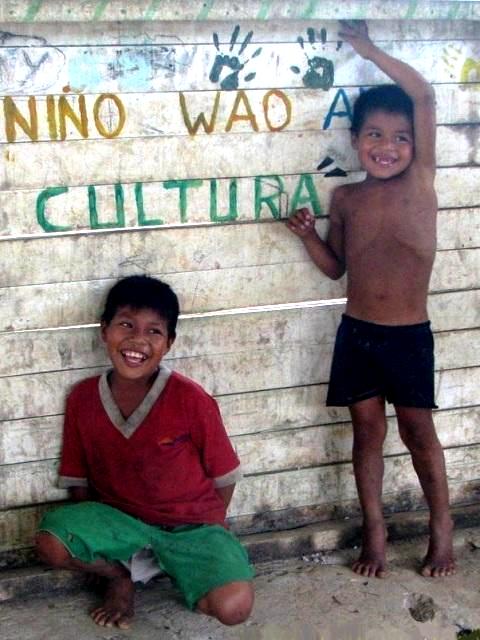
The Huaorani: Mission School

Figure 1.--Since the 1970s, some Huaorani have begun to adopt more settled life styles in forest communities, although some bands continuetheir traditional ways and avoid outside contact. We also notice children attending a missionary school. On the wall of the school is written ,"Soy niņo Wao; ame mi cultura" (I am a Wao child; I love my culture.) The school has a program designed to preserve the native culture, however the way of life of these children is quite different from that of other bands who continue their traditional life style.
|
|
Since the 1970s, some Huaorani have begun to adopt more settled life styles in forest communities, although some bands continuetheir traditional ways and avoid outside contact. We also notice children attending a missionary school. On the wall of the school is written, "Soy niņo Wao; ame mi cultura" (I am a Wao child; I love my culture.) The school has a program designed to preserve the native culture, however the way of life of these children is quite different from that of other bands who continue their traditional life style.
HBC

Navigate the Historic Boys' Clothing Web Site:
[Return to the Main Huaorani page]
[Return to the Main Amazonian tribe page]
[Return to the Main South American Amazonian Native American page]
[Return to the Main South American Native American page]
[Return to the Main Native American page]
[Return to the Main Ecuadorian page]
[Introduction]
[Activities]
[Biographies]
[Chronology]
[Clothing styles]
[Countries]
[Bibliographies]
[Contributions]
[Essays]
[FAQs]
[Glossaries]
[Images]
[Links]
[Registration]
[Tools]
[Boys' Clothing Home]
Created: 2:51 AM 4/1/2011
Last updated: 2:51 AM 4/1/2011



